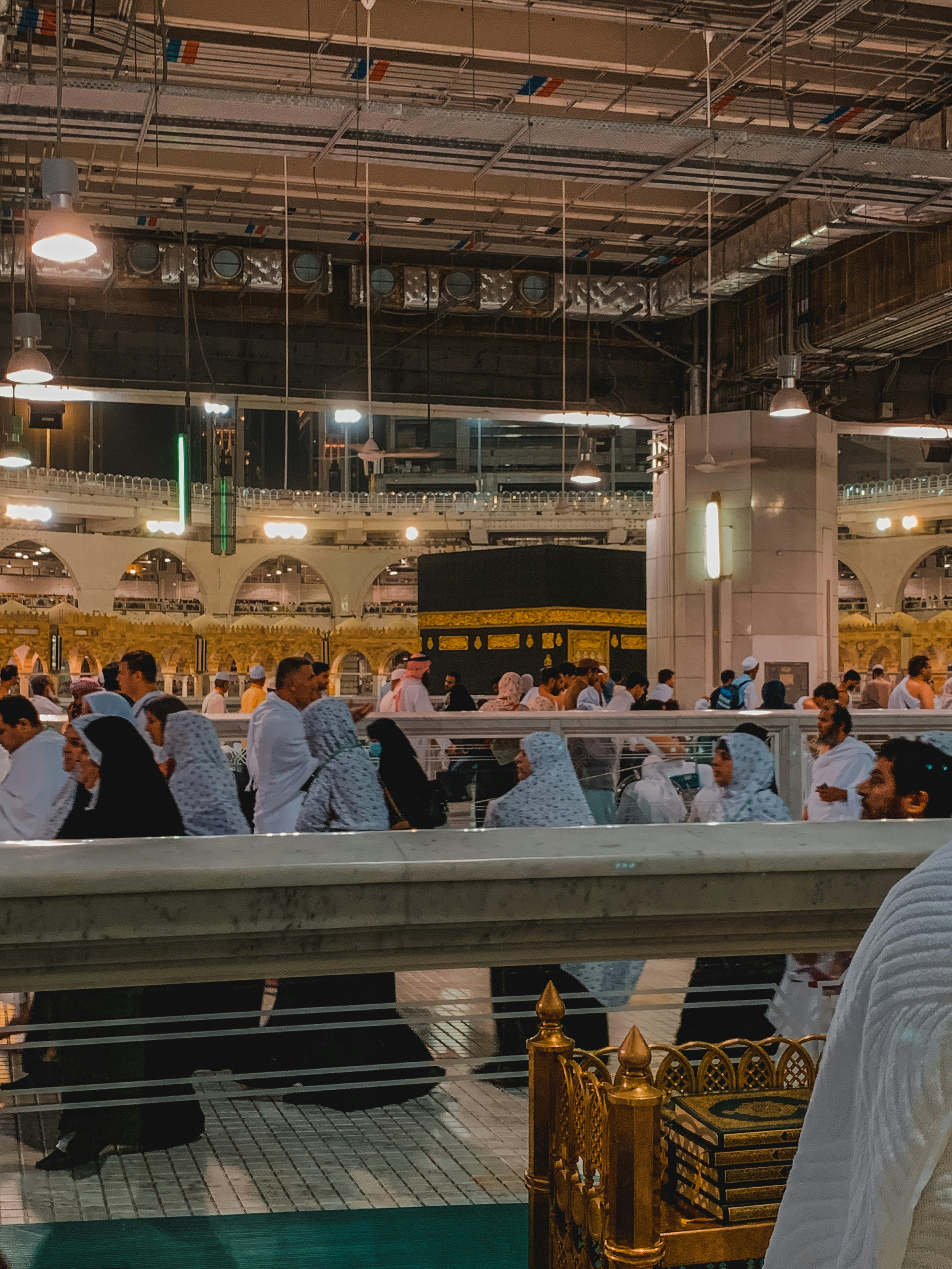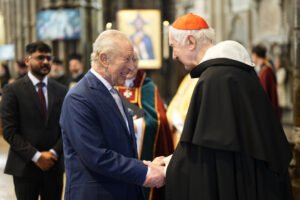The Rise of Assemblies of God: How Former Latter-day Saints are Shaping a New Faith Movement
Introduction to the Assemblies of God
The Assemblies of God (AG) is a prominent Pentecostal denomination that has significantly influenced contemporary Christianity, particularly within the United States. Founded in 1914 in Hot Springs, Arkansas, the AG arose during the early 20th century revival movements that emphasized the baptism with the Holy Spirit, divine healing, and the expected return of Jesus Christ. This movement was largely spurred by the Azusa Street Revival, a pivotal event that sparked enthusiasm for charismatic worship and practices across various Christian denominations.
At its core, the Assemblies of God is anchored by a robust belief system rooted in the authority of the Bible, salvation through faith in Jesus Christ, and the importance of evangelism. Its foundational principles are articulated through the “Tenets of Faith,” which highlight key doctrines such as the Trinity, the necessity of spiritual rebirth, and sanctification. A distinctive aspect of AG theology is the emphasis on the gifts of the Holy Spirit, including speaking in tongues, prophecy, and healing, which are seen as relevant and accessible to modern believers.
Over the decades, the Assemblies of God has experienced remarkable growth, transforming into one of the largest Pentecostal groups globally. As of 2023, it boasts millions of adherents worldwide, establishing a significant presence not only in America but also in countries across Asia, Africa, and Latin America. This growth can be attributed to its dynamic approach to worship, community engagement, and missionary initiatives. The AG’s responsive nature to cultural and social shifts has allowed it to adapt and resonate with diverse populations, particularly among former Latter-day Saints who seek a new form of spiritual expression. The Assemblies of God continues to make a profound impact on contemporary Christianity, shaping the direction of faith movements while reaching out to individuals seeking renewal and empowerment.
Understanding the Latter-day Saints Legacy
The Latter-day Saints (LDS) movement, commonly known as Mormonism, was founded in the early 19th century by Joseph Smith in the United States. Central to this faith is the belief in the Book of Mormon, which members regard as one of the holy scriptures alongside the Bible. Smith claimed to have translated this text from ancient golden plates revealed to him by an angel. This foundational narrative establishes the basis for LDS teachings, which emphasize revelations and continuing guidance from God through modern prophets.
At the heart of the LDS doctrine are several core principles, including the concept of eternal families, the plan of salvation, and the importance of personal revelation. Members believe that families can be sealed together for eternity through sacred rites performed in temples, which serve as important spiritual centers for the faith. Through these rituals, LDS members engage in practices such as baptism, confirmation, and other sacred ordinances that are seen as necessary for exaltation in the afterlife.
The cultural identity of Latter-day Saints is also distinct, characterized by a strong sense of community and adherence to specific health guidelines known as the Word of Wisdom, which discourages the consumption of alcohol, tobacco, and caffeine. This lifestyle choice fosters a unique fellowship among members, solidifying their commitment to one another and to the faith. Further, their emphasis on missionary work has expanded the presence of the LDS Church worldwide, highlighting its significant growth since its inception.
Despite these defining characteristics, some individuals find reasons to leave the LDS community. As we explore the rise of the Assemblies of God, it is essential to understand the roots and teachings of the Latter-day Saints as they shape not only the identities of their members but also the broader landscape of contemporary religious movements.
Reasons for Transition: From Mormonism to Assemblies of God
The transition from Latter-day Saint (LDS) beliefs to the Assemblies of God has become a notable trend among former Mormons. Several factors contribute to this significant shift in faith, highlighting a complex interplay of personal experiences and theological beliefs. At the core of this transition are personal testimonies that underscore a deep sense of disillusionment with traditional Mormon practices and doctrines. Many individuals report feelings of spiritual emptiness or confusion as they navigated the teachings of the LDS Church, often leading them to search for a faith that resonates more closely with their evolving beliefs.
Another critical element influencing this transition is the theological conflict encountered by many former Mormons. The doctrinal differences between Mormonism and Assemblies of God are stark; for instance, the Assemblies of God emphasizes a direct, personal relationship with God through the Holy Spirit, a concept that many find liberating compared to the more structured approach of Latter-day Saint teachings. This desire for a more personal and experiential faith journey is often a driving force behind their shift towards Assemblies of God beliefs.
Additionally, disillusionment with the cultural and social practices within the LDS Church has been a crucial factor. Critiques of the church’s historic stance on issues such as gender roles, race, and family dynamics have led some individuals to question the validity of their previous beliefs. These concerns, combined with a search for a more inclusive and accepting community, have propelled many towards the Assemblies of God. Within this new faith movement, they often find a greater emphasis on communal support and a welcoming environment, further aiding their transition. Overall, these various factors collectively illustrate the complexities involved in the spiritual journeys of former Latter-day Saints who embrace the Assemblies of God, highlighting notions of personal growth, theological alignment, and community acceptance.
The Role of Community in Faith Transition
The transition from the Latter-day Saints (LDS) Church to the Assemblies of God represents a significant spiritual shift for many individuals. A critical factor in this transition is the role of community support, which plays an essential part in helping former Mormons navigate their new spiritual journeys. Within Assemblies of God congregations, the atmosphere is characterized by a strong sense of belonging and fellowship that can be particularly welcoming to those emerging from the distinctive environment of the LDS Church.
Former Latter-day Saints often report feelings of isolation following their departure from the tightly-knit Mormon community. Assemblies of God offers an alternative that emphasizes communal ties and mutual support among its members. This inclusive environment allows individuals transitioning into the Assemblies of God to connect with others who have similar experiences, fostering a sense of camaraderie and collective identity. The importance of this communal support cannot be overstated—having trustworthy companions who understand the nuances of leaving one faith for another makes a challenging process more manageable.
Assemblies of God congregations actively encourage participation through small groups, outreach programs, and social events. These initiatives create opportunities for deeper relationships and provide pathways for personal growth within the context of a new faith community. Many former Mormons find that the Assemblies of God emphasizes inclusivity, where diversity in backgrounds is celebrated rather than scrutinized. This welcoming approach can be comforting, transforming one’s feelings of dislocation into a renewed sense of belonging.
Ultimately, the community centered around Assemblies of God is pivotal in supporting those transitioning from the LDS Church. The shared values of faith, support, and connectivity help individuals in their journey, making the transition appear less daunting and fostering a deeper, more fulfilling spiritual experience as they engage with their new community.
Cultural Integration and Adaptation
The journey of former Latter-day Saints (LDS) joining Assemblies of God congregations involves a multifaceted process of cultural integration and adaptation. As they transition into a new faith movement, individuals often encounter diverse worship styles, theological differences, and shifts in community dynamics. The contrast in worship practices is particularly evident; Assemblies of God services typically feature lively music, spontaneous expressions of faith, and a more charismatic approach to worship, which can be significantly different from the more structured services many former LDS members are accustomed to.
Former Latter-day Saints may find it challenging to adjust to the free-form nature of Assemblies of God gatherings. The expectation for spontaneous participation and emotional expression during worship can feel foreign to those raised in the more reserved environment of the LDS church. This shift can evoke mixed emotions; while some may embrace the change, others may struggle with feelings of dislocation or hesitation to fully engage. Anecdotes from individuals illustrate this spectrum of experiences. One former LDS member described initial discomfort with raising hands during worship but gradually grew to appreciate this expression as an authentic connection to the divine.
Moreover, the communal aspects of faith life also play a significant role in the adaptation process. Assemblies of God communities typically emphasize small groups, fellowship, and outreach activities that foster close-knit relationships among members. For former Latter-day Saints, navigating these new social dynamics may present both opportunities and challenges. The sense of belonging cultivated within these groups can be welcoming; however, the potential for cultural misunderstandings may also arise. Successfully blending into a new congregational life often requires patience and a willingness to embrace change, as individuals learn to balance their previous beliefs with the vibrant practices of their new community.
Theological Overlaps and Contrasts
The theological beliefs of the Assemblies of God (AG) and the Latter-day Saints (LDS) exhibit distinct contrasts, particularly in their views on salvation, the nature of God, and the role of scripture. These differences may significantly influence why some former adherence to LDS find themselves resonating with the AG movement.
In terms of salvation, the Assemblies of God adhere to a traditional evangelical perspective, emphasizing salvation through faith in Jesus Christ alone. The concept of grace is central, suggesting that believers are redeemed not by works but through the sacrificial death of Christ. In contrast, Latter-day Saints teach that salvation entails both faith in Jesus and adherence to a specific set of works, which include participation in sacraments and the observance of various commandments. This divergence in understanding salvation can lead individuals disillusioned with the works-righteousness emphasis of LDS doctrine to seek out the AG, where faith alone suffices.
The nature of God represents another theological distinction. Assemblies of God theology advocates a Trinitarian view, seeing God as one essence existing in three distinct persons: the Father, the Son, and the Holy Spirit. This contrasts sharply with the Latter-day Saint view, which posits that God the Father, Jesus Christ, and the Holy Ghost are three separate beings united in purpose but distinct in essence. Former members of the LDS faith, who may grapple with the complexities of their understanding of God, are likely drawn to the simpler, unified conception of God presented in AG teachings.
Lastly, the role and authority of scriptures also differ markedly between the two faiths. The Assemblies of God regards the Bible as the sole authoritative scripture, emphasizing its inerrancy and sufficiency for faith and practice. On the other hand, Latter-day Saints recognize the Bible along with the Book of Mormon and other texts as scripture, thereby complicating their doctrinal foundation. This emphasis on biblical authority in AG may attract former Latter-day Saints seeking a faith structure grounded solely in the Bible, offering them clarity and a return to what they may perceive as foundational truth.
Leadership Roles Assumed by Former Latter-day Saints
In recent years, the Assemblies of God has experienced a notable influx of former Latter-day Saints stepping into significant leadership roles. This transition is emblematic of wider trends in religious affiliation, where individuals leave established faith communities to explore alternatives that align more closely with their personal beliefs and experiences. The integration of these individuals into leadership positions often brings unique perspectives that enrich the church’s theological discourse and community engagement strategies.
Former Latter-day Saints possess a rich tapestry of experiences that inform their approach to leadership within the Assemblies of God. Many of these leaders have undergone profound personal journeys that challenge traditional religious paradigms, which can inspire innovative practices in pastoral care, outreach programming, and congregational engagement. The perspectives that these leaders bring often emphasize community building, inclusivity, and a commitment to serving the needs of the underrepresented, which can invigorate the Assemblies of God’s mission in local communities.
Moreover, the experiences of former Latter-day Saints can help bridge gaps between diverse groups within the church. Their knowledge of different theological frameworks and practices offers opportunities to cultivate dialogue and foster unity among congregants with varying backgrounds. This leadership dynamic encourages the church to expand its outreach efforts, focusing on fostering relationships with individuals who may feel distanced from traditional dogmas, thus enhancing overall community integration.
As these leaders assume their roles, they often initiate new programs and confirm existing ones that reflect their vision for progressive spiritual communities. By drawing upon their past experiences while embracing the Assemblies of God’s core values, former Latter-day Saints play a pivotal role in shaping the future of the denomination, ensuring it remains relevant and responsive to contemporary challenges within society.
Impact of Former Latter-day Saints on Assemblies of God Growth
The influx of former Latter-day Saints into the Assemblies of God has significantly influenced its growth trajectory in recent years. This movement among individuals who have transitioned from the Latter-day Saints Church to Pentecostal denominations illustrates a dynamic shift within the broader landscape of American religion. One of the most impactful changes can be observed in membership statistics, where a notable percentage of new congregants identify as former members of the Latter-day Saints Church. Recent studies indicate that approximately 15% of new Assemblies of God converts in certain regions identify as ex-Latter-day Saints, highlighting a trend that cannot be disregarded.
To further understand this demographic shift, case studies in areas with high concentrations of Latter-day Saints have revealed the profound interactions between former members and existing Assemblies of God congregations. For example, the Salt Lake City area has seen robust growth in Assemblies of God membership, correlating with outreach initiatives designed to engage former Latter-day Saints. These initiatives include Bible study groups tailored to address unique theological perspectives that former members bring with them, allowing for a smoother transition into their new faith community.
The influence of former Latter-day Saints extends beyond mere numbers; their experiences and testimonies contribute to the vibrant cultural fabric within Assemblies of God. Many of these individuals emphasize a desire for a more personal and expressive form of worship, which aligns closely with the Pentecostal emphasis on spiritual gifts and community involvement. This has not only invigorated congregational life but has also fostered a sense of inclusivity and belonging among members. Furthermore, the blending of cultural elements from their past within the Latter-day Saints community and the charismatic practices of the Assemblies of God has facilitated innovative worship styles and outreach programs, thereby accelerating growth and enhancing the movement’s appeal.
Conclusion: A Changing Religious Landscape
As we reflect on the journey of former Latter-day Saints who have transitioned to the Assemblies of God (AG), it becomes evident that this movement embodies a significant shift within the landscape of American faith traditions. The experiences of these individuals, marked by transformative personal narratives, provide a compelling narrative of spiritual evolution that speaks to broader themes of faith and identity.
The integration of former Latter-day Saints into the Assemblies of God is not merely a matter of individual religious preference; it represents a cultural merging that enriches both communities. This transition allows those who have left the Latter-day Saints tradition to explore a form of worship and community that resonates more deeply with their current beliefs and values. In doing so, they bring with them unique perspectives that contribute to redefining the religious identity within the Assemblies of God. This infusion of experiences and insights encourages dialogue around fundamental questions of belief, communal belonging, and personal spirituality.
Furthermore, the phenomenon of former Latter-day Saints joining the Assemblies of God ignites a broader conversation about what it means to practice faith in contemporary America. It challenges the notion of fixed religious identities and encourages a fluid understanding of spirituality that accommodates diverse experiences. The rise of these assemblies underscores how faith can evolve, adapt, and become more inclusive, offering a safe haven for those seeking spiritual fulfillment outside traditional boundaries.
In conclusion, the increasing numbers of former Latter-day Saints in the Assemblies of God are not just reshaping the denomination but are fostering an essential dialogue that could redefine faith practices in America. Their contributions signify a broader movement that invites us all to reconsider the complexities of religious identity in a dynamic cultural landscape.













Leave a Reply
You must be logged in to post a comment.